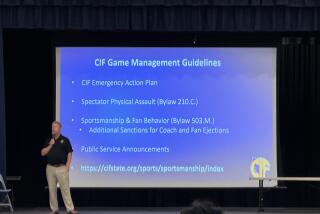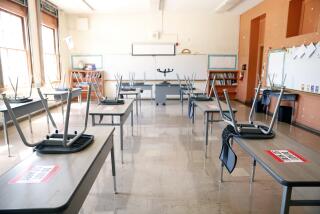Computers Do Much of the Dirty Work
- Share via
In high schools, it is often a computer that sorts out who will be in what class. Compared with elementary schools, the multiple class offerings at secondary schools and a student’s choice of electives complicate scheduling by at least a factor of six. For this reason, administrators say, computerized scheduling is a godsend.
“We run computer simulations to see how well the students will schedule into plans that they’ve requested,” says Ron Anderson, assistant superintendent at Fullerton Joint Union High School District.
Sometimes a student’s first choice of classes cannot be scheduled, and alternatives need to be selected.
At Capistrano Unified, computers are able to schedule 86% of high school students with no conflicts, says Tom Anthony, assistant superintendent of secondary school operations.
“What happens is, an initial list is generated of particular courses, not teachers. We take the numbers of choices in a particular curriculum area and develop sections. Then we assign teachers to the sections, and the computer randomly places them so we don’t have a schedule conflict,” Anthony says.
After the computerized scheduling is finished, however, each high school in his district has to make at least 500 program changes a semester as students add and drop electives, Anthony says.
At Capistrano Valley High, guidance technicians use a master schedule board to visually keep track of the classes. The board represents the entire curriculum and shows how many students are in each class--a key consideration, because class sizes are limited.
Although most program change requests are legitimate, the system is sometimes manipulated, Anthony says.
“Kids learn every angle to get into classes with their friends. Say they have PE third period, and they want to get out of it. They’ll say they want to go out for football, and they get into it, then two days later they quit football. They know they can’t be put back into third-period PE, because it’s been filled with other students in the meantime.”
More to Read
Sign up for Essential California
The most important California stories and recommendations in your inbox every morning.
You may occasionally receive promotional content from the Los Angeles Times.













